History
About Andrew Cusack
 Writer, web designer, etc.; born in New York; educated in Argentina, Scotland, and South Africa; now based in London.
Writer, web designer, etc.; born in New York; educated in Argentina, Scotland, and South Africa; now based in London. read more
News
Blogs
Reviews & Periodicals
Arts & Design
World
France
Mitteleuropa
Knickerbockers
Argentina
The Levant
Africa
Cape of Good Hope
Netherlands
Scandinavia
Québec
India
Muscovy
Germany
Academica
What To Do When You Find a Hohenzollern in Your Study

The man of letters, of course, needs a place in which to withdraw from his various dalliances in the social realm and to concentrate on the dominion of learning; a private place in which to enjoy a book, broadsheet or other periodical, or perhaps to brood in a comfortable chair with a dram of scotch and some sound music. The ladyfolk, needless to say, have no place in such a bailiwick, not even to clean, for the wise gentleman knows that a study which accumulates in dust likewise accumulates in a certain intangible value. After all, what man of letters does not relish in removing his 1928 Burns and Oates edition of Martyrs of the Upper Volta from the shelves, blowing the dust from the cover, and charging inwards to read of some blessed soul who met his end in a steamy cauldron?
What then could throw arcadian bliss into disarray quite as much as the sudden appearance of Kaiser Wilhelm? A Hapsburg? You may as well have invited! A Bourbon? Well, fair enough, they have been known to lose their heads. But a Hohenzollern? You’ve got your work cut out for you.
Once considered the seminal work on dealing with Spontaneous Hohenzollern Appearances (or ‘SHA’), Dr. Leo von Fulbreck’s Treatise on the Treatment of Hohenzollernitosicity (to use the old, politically-incorrect term for SHA), has since been discredited, perhaps unjustly due to the Sparticist leanings of the Thuringian professor. The 1919 U.S. War Department guide War Department Field Guide 24-R: Recommended Courses of Action in Event of Hohenzollern Situation (and its appendix 24-R(II) dealing with the Hohenzollern-Sigmaringen branch) perpetuated the essence of von Fulbreck’s theories shorn of their ideological slant. The Second-World-War-era Your Enemy: the Sudden Hun-henzollern released by the British Department of Information, however, is generally considered unreliable. Combing through all this mess, I have endeavoured to deliver as part of my contribution to learning the most well-researched, as well as concise, recommended course of action regarding the spontaneous appearence of Hohenzollerns in one’s study:
1. Give the man a stern, intense, but unprovocative stare (as exemplified in above illustration) and he will eventually be moved to tears, mourning the loss of Tanganyika.
2. Simultaneously ring the bell (or, if one’s home is electrically-equipped, press the buzzer) and ask one of your staff to contact the Doorn Home for the Dethroned and Bewildered to inform them that one of their patients is on the loose.
3. Offer a stiff drink and wait for the men from the Doorn Home to arrive.
With any luck that should suffice, and unfortunate mishaps will hopefully be avoided.
The Owl Shop, New Haven
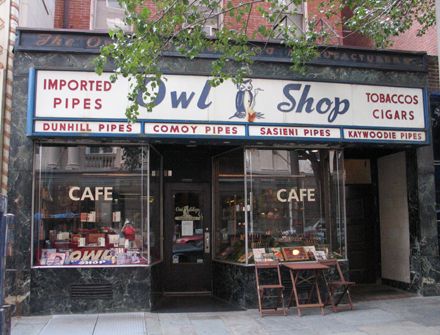
MAKING ONE OF my occasional forays into the neighboring state of Connecticut yesterday afternoon I was introduced to a little corner of paradise. A friend and I were going to partake in an evening with a club at Yale of which he was formerly president. As a mark of his completed tenure in the office he desired to purchase a pipe to donate to said organization, which brought us to an institution with which I was previously unacquainted. (more…)
Lord Dacre
The Daily Telegraph‘s recent remembrance of Maurice Cowling relays the following tale:
Invitations to the club carried a seal reading: “I’d stake my reputation on it.” Dacre was said to have retaliated by comparing Cowling’s circle to “a band of social outcasts living in a mountain cave under the command of a one-eyed Cyclops”.
There’s nothing so spiteful as an academic rivalry! I remember meeting the late Lord Dacre in Oxford about two years before his death. He was by then an ancient man, and the organiser of the assembly tried to make us feel impressed and privileged that we were able to meet such a man. I’m afraid, however, we took advantage of the Baron’s poor hearing and kept on whispering to eachother “Don’t mention the Hitler diaries!” (in the manner of Basil Fawlty’s “Don’t mention the War!” on Fawlty Towers). What can I say, we were young. At any rate, I hope the Authenticators still exist.
The Story of Notre Dame de Bon Secours
The background story to Nôtre Dame de Bons Secours, from the Catholic Community Forum:
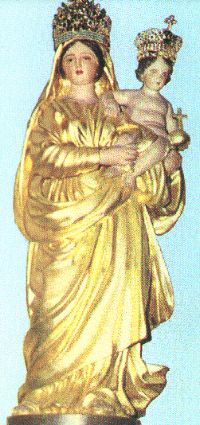 In 1727, French Ursuline nuns founded a monastery in New Orleans, Louisiana, and organized their area schools from it. In 1763 Louisiana became a Spanish possession, and Spanish sisters came to assist. In 1800 the territory reverted back to France, and the Spanish sisters fled in the face of France anti-Catholicsm. In 1803, short on teachers, Mother Saint Andre Madier requested reinforcements in the form of more sisters from France. The relative to whom she wrote, Mother Saint Michel, was running a Catholic boarding school for girls. Bishop Fournier, short-handed due to the repressions of the French Revolution, declined to send any sisters. Mother Saint Michel was given permission to appeal to the pope. The pope was a prisoner of Napoleon, and it seemed unlikely he would even receive her letter of petition. Mother Saint Michel prayed,
In 1727, French Ursuline nuns founded a monastery in New Orleans, Louisiana, and organized their area schools from it. In 1763 Louisiana became a Spanish possession, and Spanish sisters came to assist. In 1800 the territory reverted back to France, and the Spanish sisters fled in the face of France anti-Catholicsm. In 1803, short on teachers, Mother Saint Andre Madier requested reinforcements in the form of more sisters from France. The relative to whom she wrote, Mother Saint Michel, was running a Catholic boarding school for girls. Bishop Fournier, short-handed due to the repressions of the French Revolution, declined to send any sisters. Mother Saint Michel was given permission to appeal to the pope. The pope was a prisoner of Napoleon, and it seemed unlikely he would even receive her letter of petition. Mother Saint Michel prayed,
O most Holy Virgin Mary, if you obtain for me a prompt and favorable answer to this letter, I promise to have you honored at New Orleans under the title of Our Lady of Prompt Succor.
and sent her letter on 19 March 1809. Against all odds, she received a response on 29 April 1809. The pope granted her request, and Mother Saint Michel, commissioned a statue of Our Lady of Prompt Succor holding the Infant Jesus. Bishop Fournier blessed the statue and Mother’s work.
Mother Saint Michel and several postulants came to New Orleans on 31 December 1810. They brought the statue with them, and placed it in the monastery chapel. Since then, Our Lady of Prompt Succor has interceded for those who have sought her help.
A great fire threatened the Ursuline monastery in 1812. A lay sister brought the statue to the window and Mother Saint Michel prayed
Our Lady of Prompt Succor, we are lost if you do not come to our aid.
The wind changed direction, turned the fire away, and saved the monastery.
Our Lady interceded again at the Battle of New Orleans in 1815. Many faithful, including wives and daughters of American soldiers, gathered in the Ursuline chapel before the statue of Our Lady of Prompt Succor, and spent the night before the battle in prayer. They asked Our Lady for the victory of the American forces over the British, which would save the city from being sacked. General Andrew Jackson and two hundred men from around the South won a remarkable victory over a superior British force in a battle that lasted twenty-five minutes, and saw few American casualties.
It is still customary for the devout of New Orleans to pray before the statue of Our Lady of Prompt Succor whenever a hurricane threatens New Orleans.
Hat tip: Irish Elk. The image used below is of the National Shrine of Our Lady of Prompt Succor in New Orleans.
The Mace of the Palmetto State
THE HOUSE OF REPRESENTATIVES OF SOUTH CAROLINA
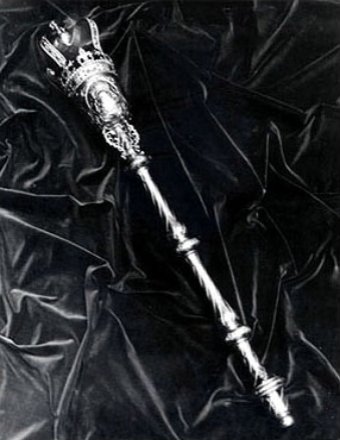
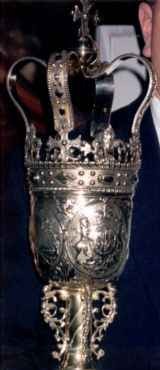 The mace currently used by the lower house of the General Assembly of South Carolina is another fine example of pre-revolutionary legislative regalia. It is a reminder of tradition in a state which takes great pride in its history and heritage. Furthermore, this ancient inheritance is still in everyday use. In 1880 the tradition of the Speaker’s procession was restored and since that year every legislative day has begun with the mace being borne by the Sergeant-at-Arms of the House, followed by the Speaker. When the Speaker reaches his chair in the House chamber, he exchanges bows with the Sergeant-at-Arms, who then places the mace upon its holster before the rostrum, exchanges bows with the Speaker once more, and thence the legislative day is called to commence. Whenever the House and Senate meet in joint session, the Mace is carried at the head of the procession.
The mace currently used by the lower house of the General Assembly of South Carolina is another fine example of pre-revolutionary legislative regalia. It is a reminder of tradition in a state which takes great pride in its history and heritage. Furthermore, this ancient inheritance is still in everyday use. In 1880 the tradition of the Speaker’s procession was restored and since that year every legislative day has begun with the mace being borne by the Sergeant-at-Arms of the House, followed by the Speaker. When the Speaker reaches his chair in the House chamber, he exchanges bows with the Sergeant-at-Arms, who then places the mace upon its holster before the rostrum, exchanges bows with the Speaker once more, and thence the legislative day is called to commence. Whenever the House and Senate meet in joint session, the Mace is carried at the head of the procession.
When the House is invited by the Senate to ratify passed legislation, the Sergeant-at-Arms bears the mace before the Speaker and the Clerk of the House in a solemn procession through the corridors of the State House, across the rotunda to the Senate chamber. There, it is put in a holding place just below the Sword of State, symbol of authority in the Senate and interesting in its own right, while the Speaker of the House, the President of the Senate, and the Clerks of both houses sign the acts. (more…)
Polo
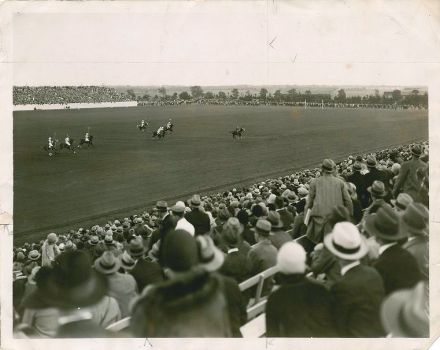
Second international polo match between the United States and the Argentine Republic, 1928.
A 250-Year-Old Mace in the Old Dominion
 THE MACE OF the City of Norfolk in the Commonwealth of Virginia is believed to be the oldest civic mace in any of the United States still in use by the city for which it was made. Robert Dinwiddie, the Lieutenant Governor and Commander-in-Chief of the Dominion of Virginia, commissioned the English silversmith Fuller White to make the silver and wood mace for the City of Norfolk, at the time the largest town in the crown colony. The inscription around the base of the bowl of the Mace denotes the generous donation:
THE MACE OF the City of Norfolk in the Commonwealth of Virginia is believed to be the oldest civic mace in any of the United States still in use by the city for which it was made. Robert Dinwiddie, the Lieutenant Governor and Commander-in-Chief of the Dominion of Virginia, commissioned the English silversmith Fuller White to make the silver and wood mace for the City of Norfolk, at the time the largest town in the crown colony. The inscription around the base of the bowl of the Mace denotes the generous donation:
Despite the inscription of 1753, the mace took some time to reach the shores of America, and the minutes of the Norfolk council record the actual presentation:
Fuller White built the mace of eleven interlocking pieces of sterling silver weighing 104 ounces, which centered around a wooden rod. The Norfolk mace measures forty-one-and-a-half inches long from the very bottom of the base to the apex of the crown.
The Royal Arms, depicted in three places on the mace, most prominently outside the bowl and inside the base of the crown, are those of George II, Britain’s second German king known for his poor grasp of the English language.
In several places on the mace are depicted national emblems of George’s realm: the English rose, the Scottish thistle, the Irish harp, and the fleur-de-lis representing the claim to the throne of France still maintained — at least heraldically — at the time. (more…)
Chesterton Remembered
SIR: Your article on G.K. (This England, Summer 1986) brought back a happy personal memory of that great and kindly man. It was 1930 in Rome, where I was a pupil at a “finishing school” – in this case an English convent. G.K. sometimes came to visit our Reverend Mother; we knew him by sight and, once seen, who could forget the huge man in the big black cloak?
Part of our “finishing” process was to be taken round the museums and galleries of the Eternal City. One day we were being shepherded through the Vatican Museum. My friend and I somehow managed to get separated from the rest of our party and in one of the galleries whom should we see but Mr. G.K. Chesterton. He was about to leave so we followed him down the stairs in the hope of being able to get his autograph. At the foot of the stairs he turned. “As we had such young legs”, he said, “could one of us be so kind as to run back to the gallery where he had left his cloak, and would the other see if she could find him a carrozza [a cab, lit. ‘carriage’]?” We needed no second bidding. I raced back up the stairs, found the familiar black cloak where he had left it and triumphantly returned it to its owner. Meanwhile my friend had found a vacant carrozza. G.K. thanked us both, climbed into the carrozza and drove off. In the excitement we had forgotten about the autographs! Next day a letter arrived at our convent. He addressed it to “The Young Ladies suffering education at the convent at No. 10 Via Boncompagni.” Inside was a sheet full of auto-graphs and a little poem.
For you alone did I desire,
Who brought the prophet’s mantle down
And called his chariot of fire!
I have the precious autograph still and what a strange Chinese-looking affair it is!
— MRS. L. RIPLEY, BRIGHTON
Happy Dominion Day!
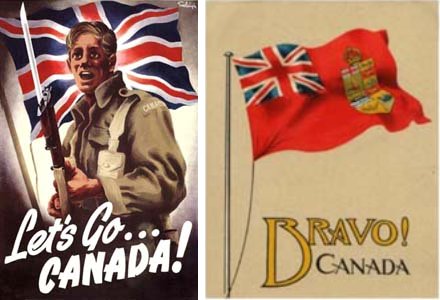
A day late, I hope all our Canadian friends and neighbours have enjoyed a happy and blessed Dominion Day. In tribute to the Great White North, I present our dear readers with that wonderful song, the anthem of anglophone Canada – thistle, shamrock, rose entwined – the Maple Leaf Forever. It is one of my favorite tunes, and were I governor of this fair land, after making coattails and top hats de rigeur for gubernatorial events, I think I’d steal the notes and make a new song called Empire State Forever.
So all that remains is to say long live Canada and God Save the Queen!
[Click here for MP3 audio file]
In Days of yore, from Britain’s shore,
Wolfe, the dauntless hero came,
And planted firm Britannia’s flag,
On Canada’s fair domain.
Here may it wave, our boast, our pride,
And joined in love together,
The thistle, shamrock, rose entwined,
The Maple Leaf forever!
The Maple Leaf, our emblem dear,
The Maple Leaf forever!
God save our Queen, and Heaven bless,
The Maple Leaf forever!
At Queenston Heights and Lundy’s Lane,
Our brave fathers, side by side,
For freedom, homes, and loved ones dear,
Firmly stood and nobly died;
And those dear rights which they maintained,
We swear to yield them never!
Our watchword evermore shall be,
The Maple Leaf forever!
The Maple Leaf, our emblem dear,
The Maple Leaf forever!
God save our Queen, and Heaven bless,
The Maple Leaf forever!
Our fair Dominion now extends
From Cape Race to Nootka Sound;
May peace forever be our lot,
And plenteous store abound:
And may those ties of love be ours
Which discord cannot sever,
And flourish green o’er freedom’s home
The Maple Leaf forever!
The Maple Leaf, our emblem dear,
The Maple Leaf forever!
God save our Queen, and Heaven bless,
The Maple Leaf forever!
On merry England’s far-famed land,
May kind Heaven sweetly smile;
God bless Old Scotland evermore,
And Ireland’s Emer’ld Isle!
Then swell the song, both loud and long,
Till rocks and forest quiver,
God save our Queen, and Heaven bless
The Maple Leaf forever!
The Maple Leaf, our emblem dear,
The Maple Leaf forever!
God save our Queen, and Heaven bless,
The Maple Leaf forever!
‘The Pope: A Portrait from Life’
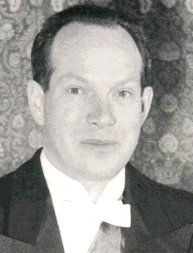 LAST NIGHT I finished reading ‘The Pope: A Portrait from Life’ by Constantine, Prince of Bavaria, about Pope Pius XII (who I thought had already been beatified, but not yet). It is definitely one of the biographies I have most enjoyed, perhaps even most enjoyed. The book’s strength lies not in academic depth nor in attention to detail but in giving the reader a great insight into the great man who Pius XII was. From his brilliant diplomacy, working for peace during the First World War under Pope Benedict XV, warning of the dangers of National Socialism as nuncio to Germany under Pope Pius XI, his own accession in 1939, and his tireless efforts to give shelter to all who were in need: Socialists, Communists, Jews, Christians, Atheists, Liberals, Royalists, Republicans, escaped Allied prisoners of war, and after the war, fascists, collaborators, Germans, and others whose lives (and souls) were equally in danger. There was no barrier of race or religion or party or ideology. Indeed, the Grand Rabbi of Rome, sheltered by Pius XII during the war was so inspired by him that three years after the war ended, he became a Christian, taking the name ‘Eugenio’, Pius’s birth name.
LAST NIGHT I finished reading ‘The Pope: A Portrait from Life’ by Constantine, Prince of Bavaria, about Pope Pius XII (who I thought had already been beatified, but not yet). It is definitely one of the biographies I have most enjoyed, perhaps even most enjoyed. The book’s strength lies not in academic depth nor in attention to detail but in giving the reader a great insight into the great man who Pius XII was. From his brilliant diplomacy, working for peace during the First World War under Pope Benedict XV, warning of the dangers of National Socialism as nuncio to Germany under Pope Pius XI, his own accession in 1939, and his tireless efforts to give shelter to all who were in need: Socialists, Communists, Jews, Christians, Atheists, Liberals, Royalists, Republicans, escaped Allied prisoners of war, and after the war, fascists, collaborators, Germans, and others whose lives (and souls) were equally in danger. There was no barrier of race or religion or party or ideology. Indeed, the Grand Rabbi of Rome, sheltered by Pius XII during the war was so inspired by him that three years after the war ended, he became a Christian, taking the name ‘Eugenio’, Pius’s birth name.
‘The Pope: A Portrait from Life’ tells the story of Eugenio Pacelli with anecdotes and stories from all the people surrounding this, the most lied-about figure in the history of the twentieth century. I strongly recommend this book to anyone interested in the life of Bl. Pius XII. It is almost cinematic as it moves from scene to scene, from the present (Rome 1954) to the past, in Rome, in Germany, in America over the years of Eugenio Pacelli’s career as priest, churchman, diplomat, and finally pontiff.
Constantine himself (pictured above) is interesting in his own right. Born in 1920, with all the Royal House of Wittelsbach he was kicked out of the German Army by Hitler and, in 1944, arrested by the Gestapo. Liberated by the French, he went on to work for the International Red Cross, until 1947 when he went to work in the Munich office of the Associated Press. In 1950, he became editor of Germany’s Revue magazine, and was later elected to the Bundestag. Unfortunately, he died in an air crash in 1969. This book as evidence of Contantine’s adroitness in the journalistic profession. It is no longer in print, sadly, and so hard to find, but if you do ever happen to come across it, buy it, read it; you will not be disappointed.
Warner on the Gotha
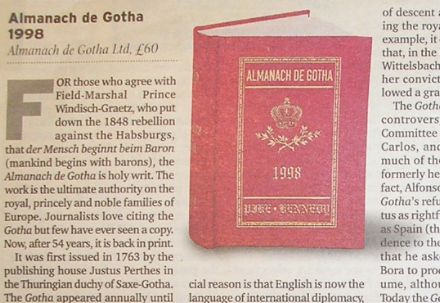
Whilst rummaging through my room at home in New York last week, I came across this article which I had cut out of the ill-fated European in 1998 written by none other than Mr. Gerald Warner, KM. I was fourteen years old in 1998 and the European folded about a year later. Click here to read in jpg form. (A large file, some browsers may require resizing to view the text at a readable size).
The Oldest Library in New York
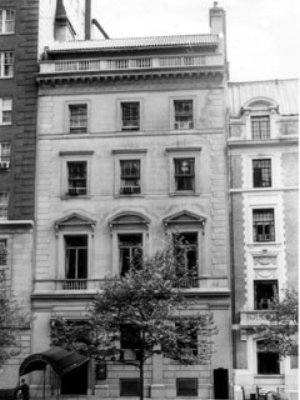
When one thinks New York and thinks libraries, the obvious place which comes to mind is the New York Public Library, one of the largest libraries in the world with one of the most beautiful homes in Bryant Park on 42nd St. 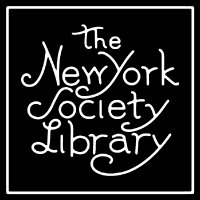 The Public Library was formed in the mid-19th century by a merger of the private Astor, Lennox, and Linden libraries. The great metropolis, however, is home to a much older bibliotheca called the New York Society Library, founded in 1754.
The Public Library was formed in the mid-19th century by a merger of the private Astor, Lennox, and Linden libraries. The great metropolis, however, is home to a much older bibliotheca called the New York Society Library, founded in 1754.
In that year, six ‘civic-minded individuals’ formed the New York Society with the aim of founding a library which would be “very useful as well as ornamental to the city”. The ‘city library’ was given a room in the old City Hall (later, as Federal Hall, home to the United States Congress), and received a charter from H.M. King George III in 1772. Unfortunately the Library was looted during the Revolution, but survived and was restocked afterwards, receiving a second charter from the Assembly of the State of New York.
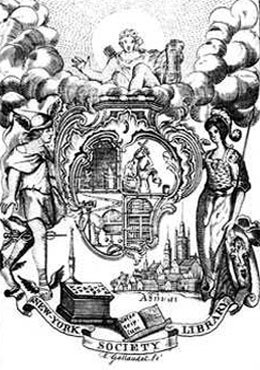
The Society Library is still, as it was then, a subscription library which operates almost like a private club, though open to all who will subscribe (and the Society Library’s membership fee is much more economical than a club). The N.Y.S.L. merged with the New York Athenaeum in 1840, and having been located a various locations around lower and mid Manhattan, in July 1937 moved its collection of one hundred and fifty thousand volumes into 53 East 79th Street (seen at top), where it continues today.
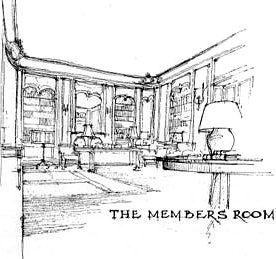
I’ve never been to the Library myself, though it seems a suitably comfortable and private location to read or research, and not expensive to boot. Perhaps I will strike up a subscription when I am next in New York as a full-time resident. They even have a Children’s Room which would be useful when progeny appear.
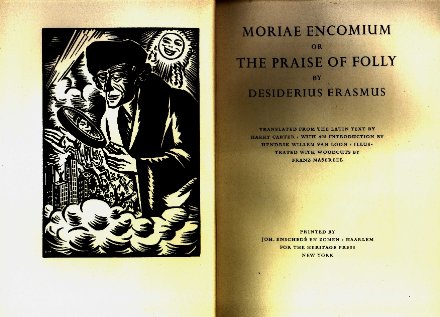
The Remarkable Hapsburgs

Last night, Fr. Emerson popped up from Edinburgh and gave a talk on the Hapsburg dynasty. It was tremendously interesting. I learned so much I hadn’t known before and it opened up a terrific number of avenues of information down which I have only begun to stroll.
I had no idea how remarkable a man Franz Ferdinand was. All they teach you in America is “This is the guy who got shot” instead of “This man would have been the savior of all that is good and holy in Europe.”
I have seen and read a lot of what Europe is today; Fr. Emerson gave us a glimpse of what Europe was yesterday, before the utter destruction of the social order of the continent by that moment in Sarajevo and everything that came after it. Knowing what Europe was, how depressing to see it now!
It also filled me with some optimism, oddly enough. I used to be partly in the school of thought that’s convinced that Europe is lost. If this is how Europe was, surely it could be again? Perhaps, perhaps not. (more…)
The Ark and the Dove
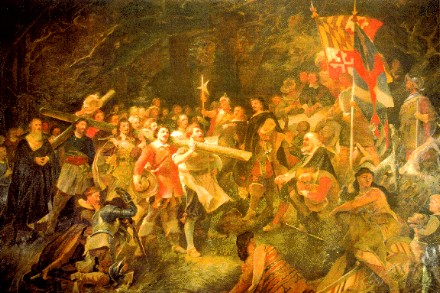
Yesterday, whilst plotting reaction deep within the Cellar Bar on Bell St, the subject of the Catholic landing in Maryland came up. The event took place on March 25, 1634, when the passengers of the Ark and the Dove disembarked upon the shores of Terra Mariae, held a Mass, and then hewed a Cross out of felled trees, raising it while saying the Litany of the Holy Cross.
 Surely these three elements of Angledom, Catholicism, and America make March 25 a festival of the apex of civilization?
Surely these three elements of Angledom, Catholicism, and America make March 25 a festival of the apex of civilization?
The Ark and the Dove were the subject of a rejected proposal for the Maryland state quarter.
Anyhow, descendants of the passengers of the Ark and the Dove might be interested in joining the Society of the Ark and the Dove, the insiginia of which can be seen below. (Image courtesy of the Hereditary Society Community).
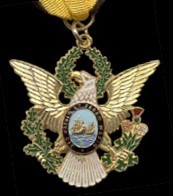
Thierry d’Argenlieu
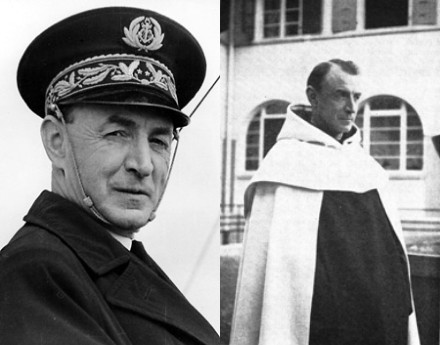
Today we bring you the story of a man known as both Brother Louis of the Trinity, OCD, and Admiral Georges Thierry d’Argenlieu.
D’Argenlieu graduated from the Ecole Navale in Brest and was awarded the Legion d’Honneur for his actions in the Great War. After the war, he became a Carmelite friar, taking the name of Louis de la Trinité. As the Second World War commenced, he once again put on the uniform and partook in the defence of France from the pagan Nazis. Once France was vanquished, he escaped to London where he allied himself with General de Gaulle and the Free French Forces, eventually becoming the commander of the Free French Naval Forces. At the Liberation of the Paris, he strode down the Champs Elysée with de Gaulle and Leclerc and attended the Te Deum at Notre-Dame.
Incidentally, he was also the one who suggested the adoption of the Croix de Lorraine as the symbol to differentiate the Free French Forces from those of Vichy France.
In 1947 however, while Governor-General of Indochina, his request to leave the Armed Forces was granted, and he returned to life as a Carmelite, dying at the Priory of Avon in 1964.
More about Admiral d’Argenlieu/Father Louis here, here, and here.
The Other September 11th
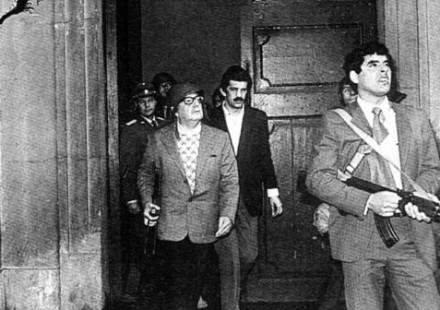
¡No Pasaran! has a post on Chile’s would-be dictator, Salvador Allende (seen above, helmeted, in the last photo taken of him alive). Many left-wing urban intellectuals both in the Americas and Europe fawn over Allende as the heroic democratically-elected savior of the proletariat who was cruelly overthrown by the reactionary military just moments before a Socialist paradise would have been achieved. Nothing could be further from the truth.
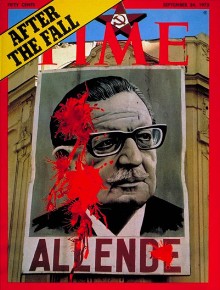
Higher Learning
Via Mere Comments.
A hand shot up. “Mr. Letendre, how do we learn from our mistakes?”
I went up to her and said, “Hold out your hand.” She did and I slapped it smartly.
“Hold out your hand,” I said again.
“No!” she replied.
“Congratulations!” I said. “You have just learned from your mistake.” I turned to another student. “Hold out your hand.”
“No!” he replied.
“See, you learned from her mistake. The only way we humans learn is by making mistakes. Thomas Edison made 1,000 mistakes before he invented the light bulb. It’s better to learn from other people’s mistakes. Do you know what we call learning from other people’s mistakes?”
“No,” the class answered.
“We call it History!” I proclaimed.
Another year of teaching had begun.
Who’s still afraid of Keith Windschuttle?
Published in

By Ean Higgins
July 22, 2004
AS the elite of the nation’s academic historians met in the stately rooms of the Newcastle Town Hall, fear and loathing lurked the corridors.
The Australian Historical Association spent virtually an entire day trying to work out strategies to deal with the menace. Would there be safety in numbers if academics stood together? What should be done when the terror struck again? How could anyone survive when the mass media was in on the conspiracy?
Over 18 months after Keith Windschuttle published his book The Fabrication of Aboriginal History, the academic world is still anguishing over its impact. It is terrified of what he will do next. Windschuttle struck at the heart of the accepted view of Australian colonial history in the past 30 years – that the settler society had engaged in a pattern of conquest, dispossession and killing of the indigenous inhabitants. The facts, he said, did not stack up.
The Sydney-based writer, among other things, questioned the references used by academic historian Lyndall Ryan to justify her claims that the British massacred large numbers of Aborigines in Van Diemen’s Land in the early 1800s. Her footnotes supporting the claims did not do so, he wrote.
He also took on Henry Reynolds, the venerable historian of the Left, whose depiction of a brutal British conquest of Tasmania had been the accepted norm.
Reynolds’s work on the concept of terra nullius — that the British seized Aboriginal land based on a policy that it was owned by no one — developed such currency that it is believed to have influenced critical High Court judgments on land rights, including the Mabo decision. The thrust of Windschuttle’s thesis was that political correctness had triumphed over historical fact.
With the passage of time, the academic history profession is far from over the history wars. An extraordinary number in its ranks believe they have been been damaged by populist history propounded by Windschuttle. They are searching for a way out. Only a few seem brave enough to speak up, arguing that freedom of expression is the primary issue.
At the recent conference, Ryan made some effort, though ultimately unsuccessful, to avoid media coverage for a talk she gave entitled How the Print Media Marketed Keith Windschuttle’s The Fabrication of Aboriginal History: Implications for Academic Historians.
She said the media had taken up Windschuttle as representing the real history of colonists’ relations with Aborigines, grabbing the view that Australians had been hoodwinked by the academic left-wing historians’ version. “I don’t think the media owns free speech,” Ryan said. She had also been shocked, she said, that Stuart Macintyre, the influential left-leaning University of Melbourne historian, had appeared to criticise her over footnote inaccuracies.
She did admit to five footnote errors, but said the primary sources verified her thesis and “the simple fact is that footnote errors do occur”.
Her abstract said: “The AHA and universities need strategies and protocols in place to address future assaults on academic historians.”
Ryan was not alone in promoting the Windschuttle-media conspiracy. The AHA president, David Carment, said the The Australian had deliberately timed the publication of its review of Windschuttle’s work for the summer of 2002. During holidays more academics were on leave, Carment said, and “less able to defend themselves,” and it was “a time when people were reading newspapers”. (In fact, newspaper circulations fall away over summer holidays.)
It might be time, Carment said, for the association to “defend its people on the basis of their professional integrity” while not taking sides in the debate.
Carment also raised, though he did not fully support, the concept put forward by West Australian historian Cathie Clement for a code of ethics that would gag historians from criticising the integrity of their peers in public. Several in the audience said everyone had to be ready to counter-attack when Windschuttle came out with his next book.
Richard Waterhouse from the University of Sydney, said academics took Windschuttle too seriously. “Sometimes we have tended to treat him as an intellectual equal,” Waterhouse said, adding that sarcasm might be more appropriate. (Windschuttle earned a first-class honours degree in history from the University of Sydney in the 1960s, lectured in the subject, earned a masters in politics and left Macquarie University in 1992 when he set up a publishing house.)
There were a couple of muted mutterings from the audience about how it would be necessary to learn media skills, and not attempt to look like academics defending their own cabal. But nobody at the session publicly asked the key question which was in some of their minds: was the academic historians’ fear of Windschuttle and newspaper opinion pages absolutely paranoid?
Greg Melleuish, from the University of Wollongong, says he is intimidated by the pack mentality of the Newcastle meeting. “I was quite astonished,” he says. “It was like ‘let’s get a group of people together to ambush Windschuttle’. I think they feel under threat and that’s why they concoct these conspiracy theories.”
Other historians have expressed alarm at the attitude of their peers, including classical studies historian Ronald Ridley at the University of Melbourne. “The way they have shut down the debate, if they have made some errors, is really appalling,” he says.
“I don’t think any historians of Greek or Roman history would make these mistakes. And when you deal with issues such as indigenous history, the politics are red hot. You don’t just have to be a competent historian, you have to be top class.”
The question is why academic historians are so concerned about the impact of Windschuttle.
Macintyre, while he does not accept Windschuttle’s suggestion of a fabrication, does warn that mistakes can have a broader effect.
“There is an understandable public concern about the accuracy of historians’ work,” he says. At the same time, Macintyre maintains, Windschuttle fits with a conservative agenda to lift a burden of national shame from Australian shoulders over the Aboriginal issue.
Macintyre told the conference the history wars fitted in with broader “political dimensions” of the Howard Government’s “abandonment of reconciliation, denial of the stolen generations, its retreat from multiculturalism and creation of a refugee crisis”.
“Windschuttle was the first conservative intellectual to base his case on substantial historical research,” he says.
Windschuttle says this is precisely why the academic community is still so scared of him. “There is a whole generation who have invested not just their academic capital but also their political capital in the Henry Reynolds view,” he says. And, says Windschuttle, he has made Australian history interesting again for high school students who are more likely to go on to study it in universities.
While not referring to the Windschuttle debate, NSW Premier Bob Carr, a longstanding history buff, said much the same thing at the conference.
“History is an argument and the more argument there is in it the more young people will read it,” he said.
Long Live Our Holy Germany!
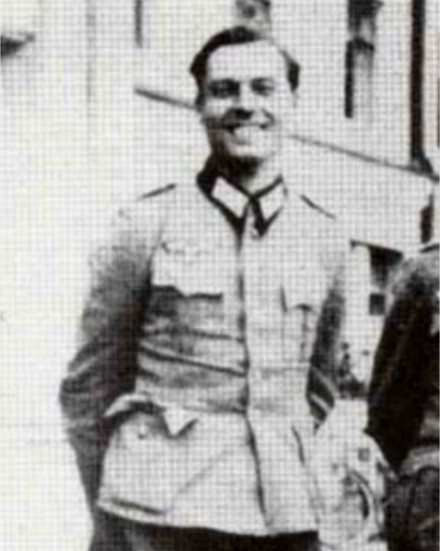
It was July 20, 1944, sixty years ago today, that Col. Claus Schenk Graf von Stauffenberg was executed for his masterminding the plot to kill Adolf Hitler. Stauffenberg was a devout Catholic who became convinced that Hitler was an Antichrist.
“Fate has offered us this opportunity, and I would not refuse it for anything in the world. I have examined myself before God and my conscience. It must be done because this man is evil personified.”
His uncle, Graf (Count) Nikolaus von Üxküll, recruited him into the resistance movement after the Polish campaign in 1939. After a series of missed opportunities, Stauffenberg finally placed a bomb to kill Hitler. Unfortunately, it was moved to the other side of a strong oak table supporter, shielding Hitler from the full force of the blast. Claus Philip Maria Shenck Graf von Stauffenberg was shot by the Gestapo at half past midnight that same evening.
His dying words were “Es lebe unser heiliges Deutschland!” – Long live our holy Germany.

Search
Instagram: @andcusack
Click here for my Instagram photos.Most Recent Posts
- Amsterdam November 26, 2024
- Silver Jubilee November 21, 2024
- Articles of Note: 11 November 2024 November 11, 2024
- Why do you read? November 5, 2024
- India November 4, 2024
Most Recent Comments
- on The Catholic Apostolic Church, Edinburgh
- on Articles of Note: 11 November 2024
- on Articles of Note: 11 November 2024
- on Why do you read?
- on Why do you read?
- on University Nicknames in South Africa
- on The Situation at St Andrews
- on An Aldermanian Skyscraper
- on Equality
- on Rough Notes of Kinderhook
Book Wishlist
Monthly Archives
Categories



